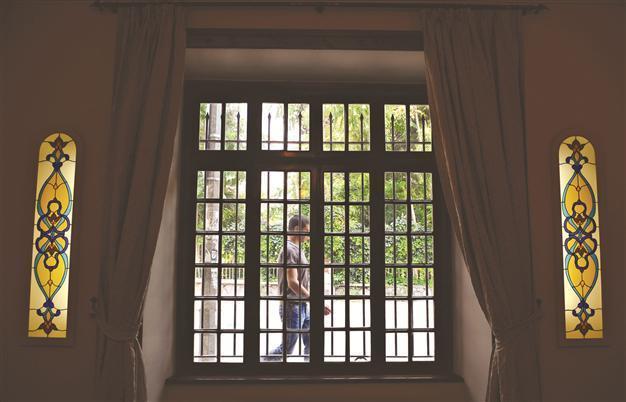Levantine culture to open to tourism in Aegean province
IZMIR - Anadolu Agency

Tourism professional Alex Baltazzi organizes tours to Levantine mansions in İzmir. AA photo
In İzmir, regarded as the capital of the world famous Levantine culture, the most important heritage of this culture, Levantine mansions, will open to tourism. Works have been initiated to organize tours to these mansions, most of which are in Bornova and Buca neighborhoods.Levantines came to İzmir for trade in the 18th and 19th centuries from countries like Italy, France, England and Austria, and created a unique culture of living by blending the eastern and western cultures. Their houses, with their distinct architecture, will now be among İzmir’s touristic attractions.
Tourism professional Alex Baltazzi, whose family came to İzmir from Venice in 1746, said that the word Levantine, which derived from the word “levant” (meaning “east”) defined European people who moved to the eastern Ottoman coastal towns and lived there for at least one generation. He said those European people abandoned their strict faith and were impressed by the eastern culture.
“Marriages of different nations and religions, which were not possible at that time in Europe, were possible here. A German could marry an Italian, Greek, a Georgian or even a Muslim. For example, there are Turks in 90 percent of Levantine families living in İzmir today. My wife is a Turk, too. İzmir was at a place where Europe wanted to be in the 19th century,” he said.
Baltazzi said that the Levantines, who were sending agricultural products like fig, grape and cotton to Europe through the sea, grew in the finance sector, too, adding, “For example, my family established the Istanbul Bank, the first bank in the Ottoman Empire, in 1849.”
He said that the population of the Levantines had reached nearly 10,000. “They had first built houses in Bornova’s Hacılar village and carried the magnificent architecture of their own countries to İzmir. They built magnificent mansions in the city. The life in these mansions and the Levantine culture inspired many literary works. With the dissolution of the Ottoman Empire, trade did not continue and many Levantine families returned to Europe after the War of Independence. But some families such as Arkas, Aliaotti, Giraud, Dutilh stayed here. The current population of the Levantines is some 1,000. Many people in Europe are curious about the roots of their families. I publish my studies about this issue on the websites appealing to the Levantines. Dozens of people come to İzmir every year to see their family house,” Baltazzi said.
No permission to enter some mansions
Baltazzi said that many families who spent their holiday in Turkey had asked them to organize tours to Levantine houses, and that the tours began to gain more interest. “İzmir Municipality and other municipalities attach great importance to these values,” he said, “Restoration works continue in some houses. Lots of houses from the Levantines serve as public buildings. Ege University opened its buildings for visitor tours. Now we need to get permission to include these mansions from Buca to Bornova in our tour programs. But some organizations do not give permission for touristic visits. For example, we are not given permission to enter the Forbes Mansion in Buca Seyfi Demirsoy Hospital. Also, ownership debates on the restoration of Peterson Mansion still continue.”
Baltazi said that the theater in Kadifekale, where İzmir’s first pontiff St. Polycarp was killed by the Romans in 155, was a holy area, and faith tourism could be revived when transformation works were completed. “A signboard of St. Polycarp may activate a new faith tourism movement. A tour program including the Levantine mansions will draw the interest of tourists,” he added.
Only five houses visited
Guide Sibel Pasquali, who comes from a Levantine family and organizes tours to the Levantine houses in İzmir, said that most of these mansions were destroyed after the Republic period and nearly 30 houses still survived in İzmir. “Among these houses, only five can be visited. People of different professions also want to visit these houses. The support of local administrations and public authorities is necessary for the mansions to become a tourism destination,” she said.
Ten mansions in Bornova are located in the Ege University campus and serve as education buildings, museums or research centers. The oldest and the most splendid one is Whittal Mansion, serving as Ege University’s Rectorate building.
A significant portion of the historical buildings in the city center serve as public buildings. Some of them are used as restaurants and cafes and private museums are opening in some of the buildings.
Among the Levantine mansions are Whittall Manion, Wilkinson Mansion, La Fontaine Mansion, Edwards Mansion, Kuyulu House, Sirkehane, Pasquali Mansion, Bardisbanian Mansion, Sarı Mansion, Patterson Mansion and Steinbüchel Mansion.
















